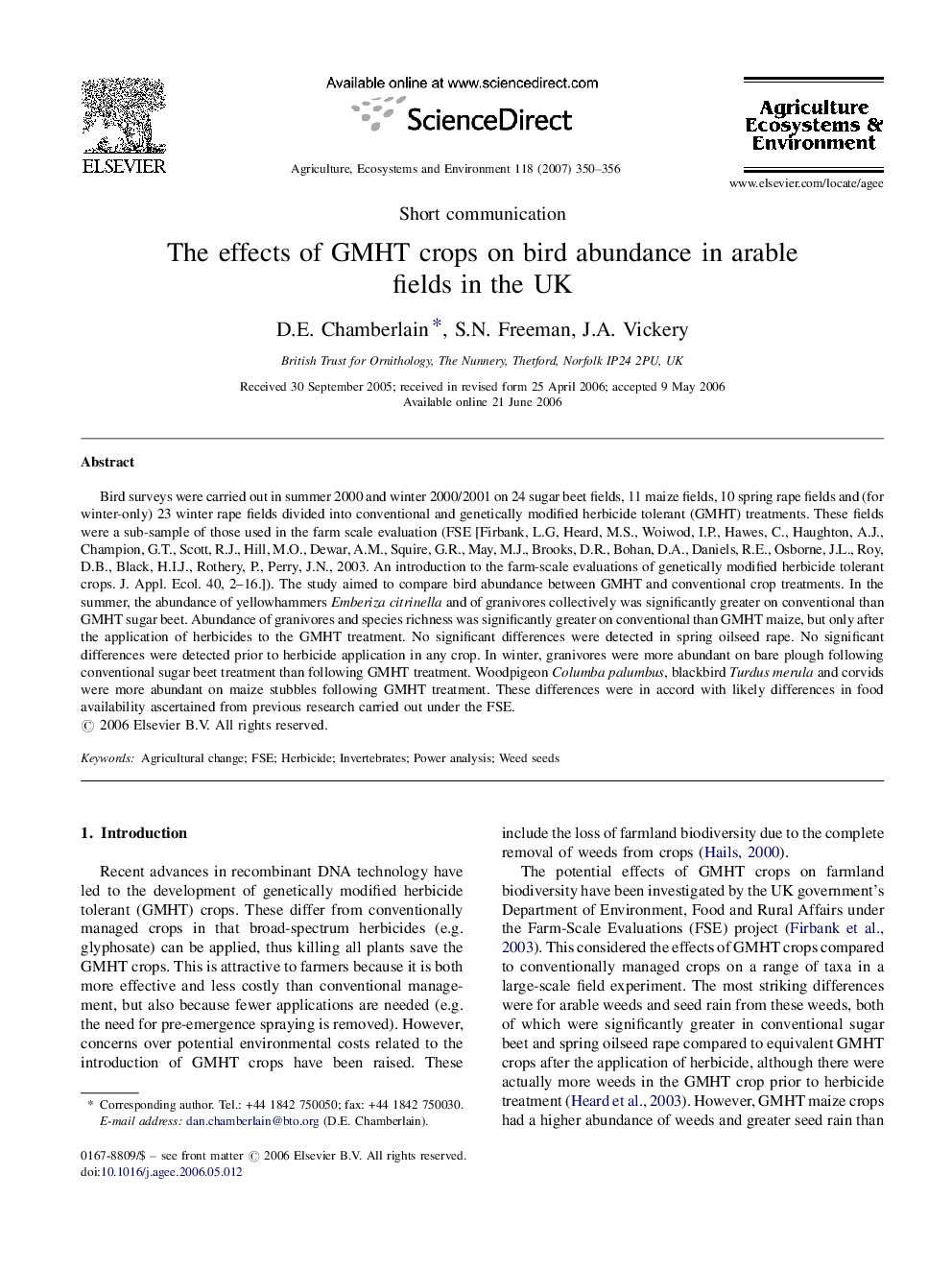| Article ID | Journal | Published Year | Pages | File Type |
|---|---|---|---|---|
| 2415821 | Agriculture, Ecosystems & Environment | 2007 | 7 Pages |
Bird surveys were carried out in summer 2000 and winter 2000/2001 on 24 sugar beet fields, 11 maize fields, 10 spring rape fields and (for winter-only) 23 winter rape fields divided into conventional and genetically modified herbicide tolerant (GMHT) treatments. These fields were a sub-sample of those used in the farm scale evaluation (FSE [Firbank, L.G, Heard, M.S., Woiwod, I.P., Hawes, C., Haughton, A.J., Champion, G.T., Scott, R.J., Hill, M.O., Dewar, A.M., Squire, G.R., May, M.J., Brooks, D.R., Bohan, D.A., Daniels, R.E., Osborne, J.L., Roy, D.B., Black, H.I.J., Rothery, P., Perry, J.N., 2003. An introduction to the farm-scale evaluations of genetically modified herbicide tolerant crops. J. Appl. Ecol. 40, 2–16.]). The study aimed to compare bird abundance between GMHT and conventional crop treatments. In the summer, the abundance of yellowhammers Emberiza citrinella and of granivores collectively was significantly greater on conventional than GMHT sugar beet. Abundance of granivores and species richness was significantly greater on conventional than GMHT maize, but only after the application of herbicides to the GMHT treatment. No significant differences were detected in spring oilseed rape. No significant differences were detected prior to herbicide application in any crop. In winter, granivores were more abundant on bare plough following conventional sugar beet treatment than following GMHT treatment. Woodpigeon Columba palumbus, blackbird Turdus merula and corvids were more abundant on maize stubbles following GMHT treatment. These differences were in accord with likely differences in food availability ascertained from previous research carried out under the FSE.
